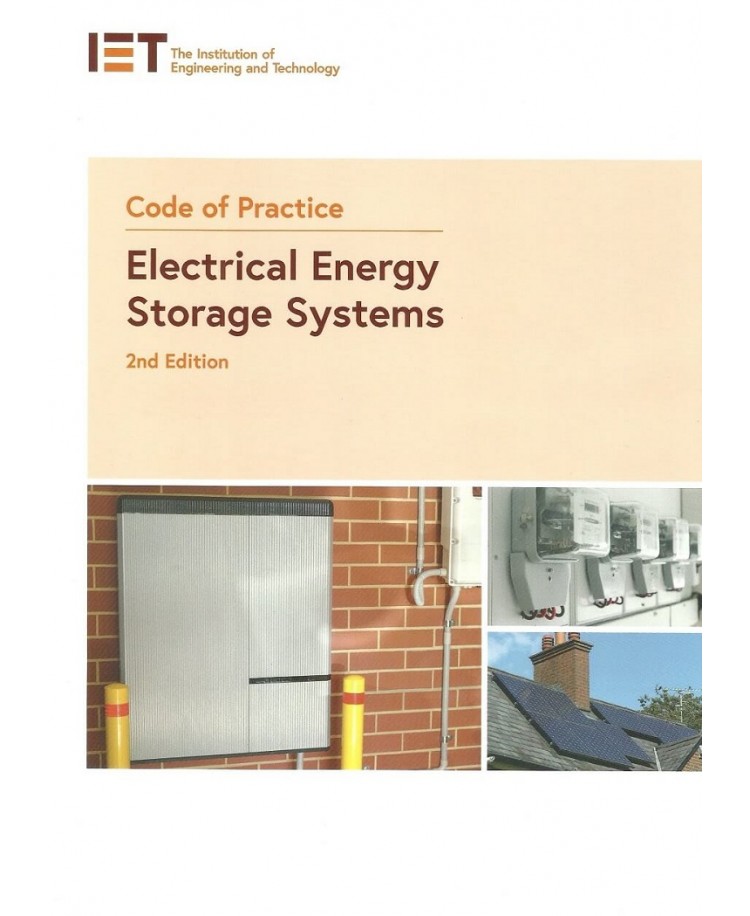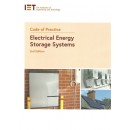£ 0.00
Checkout⭐️Opens in any PDF file viewer
⭐️Ability to highlight, select, edit, save and print
⭐️Built-in search for words
How to download
To download the book in PDF format, register on this site, pay through the form of payment using a PayPal account or without a PayPal account - by paying by card in the form of PayPal.
After payment - return to the "Personal Account" - section "Downloads" on the site, where your PDF book will be available for download.
If for some reason you have difficulties with this process - send us a message and we will send your PDF book to your email.
About
Pages: 177 pages
Size: 74 MB
Publisher: IET
Author (s): IET
Language: English
Date of Publication: 2021
Electrical energy storage systems (EESS) provide storage of electrical energy so that it can be used
later. EESS may be installed for a number of reasons, generally for one or a combination of the following
main applications.
(al Increasing the 'self-consumption' of buildings fitted with renewable energy systems.
For example, for buildings fitted with renewable generation systems, such as wind, solar PV or hydro-electric, there will be times during the day, varying with the time of year and with weather conditions, when the power generated by the renewable generation is greater than the power requirements of the building. During those periods, all the surplus electricity - in a system without storage - is exported into the grid (or curtailed by the generation inverter in a zero export scenario). For systems with storage, some of the energy that would otherwise be exported can be retained for use later in the day - an operation sometimes called 'time-shifting'.
(b) Arbitrage services
By charging a battery during times when electricity costs are lower, and providing power at times of
peak electricity prices or on demand, such as during distribution use of system 'red zones' (the highest
tariff periods), an EESS facilitates the reduction in annual electricity costs for commercial and industrial
customers. Arbitrage is also possible for domestic customers on certain tariffs, where use of the EESS
is managed by brokerage services.
c) Ancillary services
EESS are able to provide grid support features such as assisting with frequency regulation or voltage
support. They can also be used to manage export constraints when there are high levels of distributed
generation deployment and to defer costly electricity network investment or reinforcement.
(d) Providing a back-up or alternative power supply.
An EESS can provide electricity in the event of a power cut and can also be used to provide a dedicated
supply for specific loads.
This is just a summary of the main applications - later in Section 4.
Note: a more comprehensive description of EESS applications is covered.
This Code of Practice looks at EESS applications and provides information for practitioners to safely and
effectively specify, design, install, commission, operate and maintain a system.
The second edition takes account of developments in the industry, and progress in standardization.
Content
Lists of Figures and Tables
Acknowledgments
Section 1 Introduction
Section 2 Scope, purpose and use of this Code of Practice
2.1 Scope and purpose
2.2 Use of this Code of Practice
Section 3 EESS components and architectures
3.1 Overview
3.2 System functionality
3.3 Power coupling modes
3.4 Packaged EESS and discrete component EESS
3.5 Examples of system architectures
Section 4 EESS operating states and applications
4.1 Introduction
4.2 Optimizing self-consumption of renewable energy
4.3 Arbitrage and aggregation
4.4 Reserve network capacity
4.5 Island mode, grid-independent, UPS and CPS operation
4.6 Ancillary services
4.7 Network upgrade deferral and peak lopping (peak shaving)
4.8 Renewable integration and export limitation
Section 5 Batteries
5.1 Common storage devices
5.2 Battery characteristics
5.3 Battery charge profiles
5.4 Battery warranties
5.5 Hybrid battery systems
Section 6 Other EESS components
6.1 Inverter
6.2 Battery management system (BMS)
6.3 DC to DC converting PCE
6.4 Thermal management system
6.5 EESS controller
6.6 Independent means of earthing
6.7 Monitoring and metering
6.8 Grid synchronization
Section 7 EESS safety and planning considerations
7.1 Planning
7.2 Safety
Section 8 Specification of an EESS
8.1 System specification
8.2 Sizing an EESS for renewable time shifting (maximizing self-use)
8.3 Sizing an EESS for back-up and island mode systems
8.4 AC coupled system design - component compatibility check
8.5 Sizing an EESS for grid services
Section 9 Design of an EESS
9.1 General consideration of electrical installation standards
9.2 The EESS battery and PCE/BMS DC arrangements
9.3 The EESS operating in parallel with the grid (connected direct~feeding and connected reverse-feeding modes)
9.4 The EESS as an alternative source of supply to the grid (island mode)
9.5 Selectivity with supply-side protective devices
9.6 Electromagnetic compatibility
9.7 Surge and lightning protection
9.8 inrush currents
9.9 Load handling and load shedding
9.10 The EESS supplying DC circuits
9.11 Isolation and switching off for maintenance
9.12 RCD selection
Section 10 Network connection and DNO approval
10.1 General
10.2 Connection requirements tor generators
10.3 Engineering Recommendations G98 and G99
10.4 G98: single premises
10.5 698: multiple premises
10.6 G99: installations
10.7 Labelling requirements
10.8 New connections
10.9 Contestable and non-contestable works
10.10 Engineering recommendation G100
Section 11 EESS Installation
11 Installation phases
11.1 Battery installation
11.2 PCE/BMS location
11.3 Combined EESS units
Section 12 EESS inspection and testing
12.1 Inspection requirements
12.2 Circuit test requirements
12.3 EESS Commissioning
Section 13 EESS handover and documentation
13.1 System handover
13.2 Minimum system documentation
13.3 Larger projects (typically commercial and industrial, or multi-occupancy residential)
Section 14 EESS operation and maintenance
14.1 General
14.2 Scheduled maintenance
14.3 Periodic: verification
14.4 Regular inspections
14.5 Disposal of replaced components
14.6 Ensuring continued compatibility of components
Appendix A Glossary
Appendix References
Appendix C System labels and safety signs
C1 General
C2 Battery hazard Signage
C3 Signage for multiple supplies
Appendix D Standards
D1 Normative references
D2 Related standards
Appendix E DC arc flash risk assessment
E1 Introduction
E2 Pre-assembled battery systems
E3 Approach for other battery systems
Appendix F
Appendix G
Index



-750x916.jpg)
-750x916.jpg)
-750x916.jpg)

-130x130.jpg)
-130x130.jpg)
-130x130.jpg)